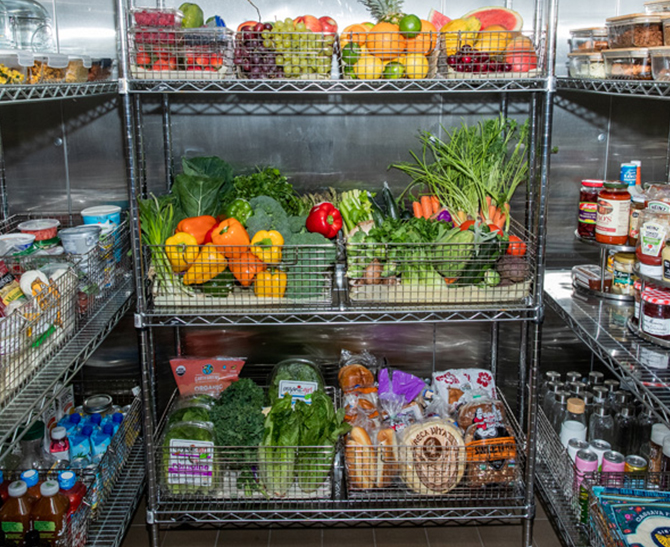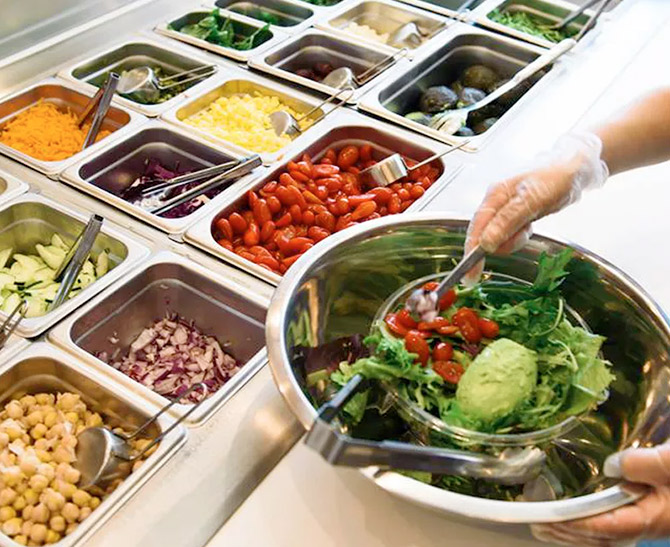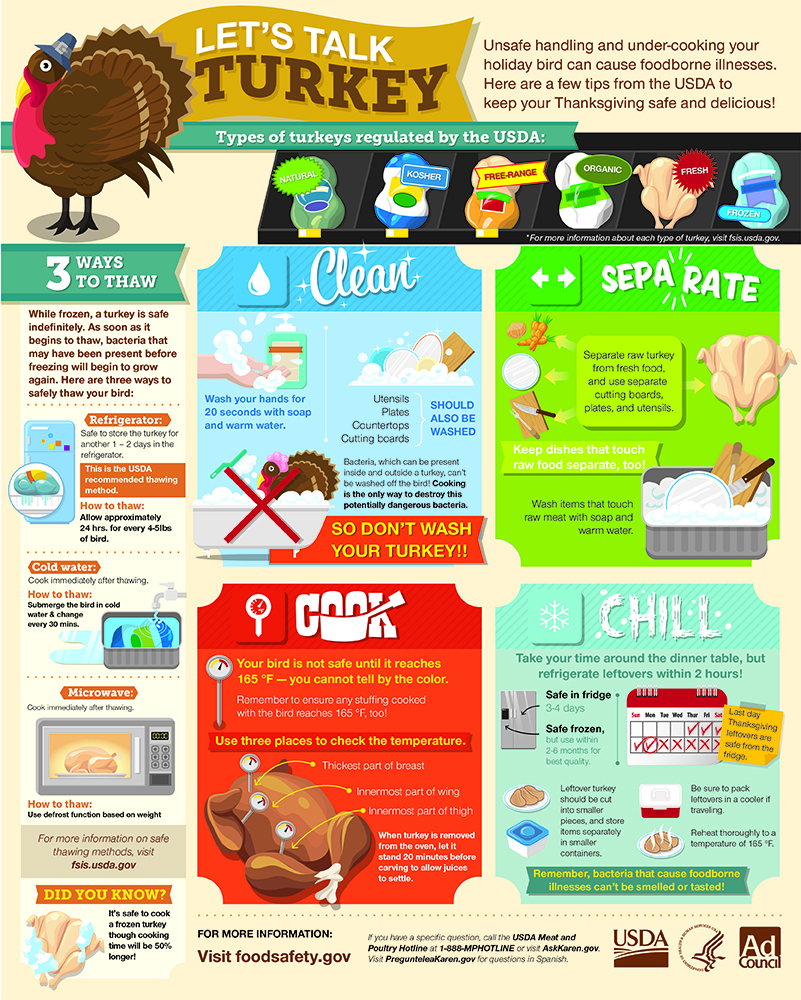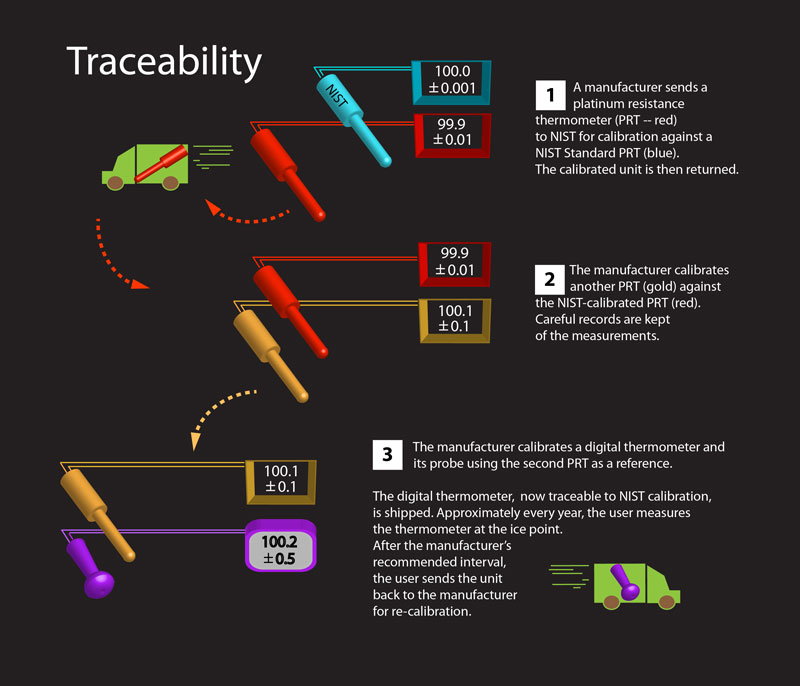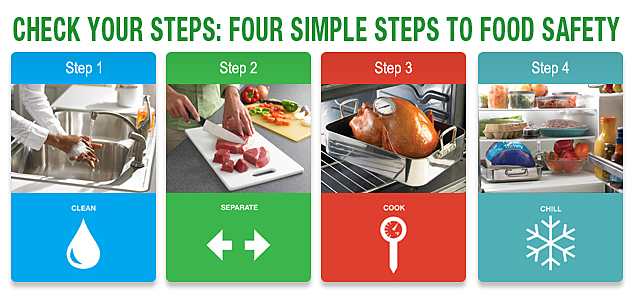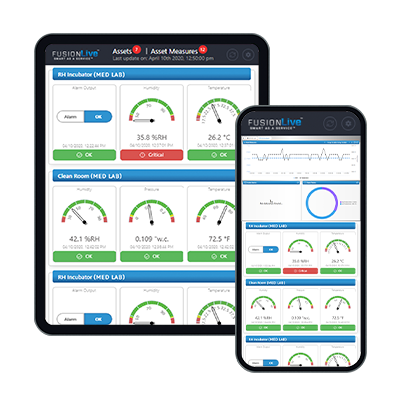
Food Temperature Monitoring Systems for Supermarkets & Restaurants
Each month, the average American household spends over $600 on food, most of which is fresh and frozen foods from supermarkets, and the rest is purchased out of the home. For this reason, monitoring freezer and refrigerator temperatures in retail food chains is extremely important. Temperature inconsistencies in any of the freezer and refrigerator equipment that stores food in these stores can case foodborne illness, but at the same time it is hard to monitor these units manually with so much else going on within the store. That's where temperature monitoring comes in.
How E-Control Systems Works for Restaurant & Supermarket
We provide a comprehensive solution for monitoring and managing restaurant and supermarket environments. Our system utilizes advanced sensors to continuously monitor critical parameters such as temperature, humidity, and food safety in these establishments. Real-time data is collected, analyzed, and displayed on a centralized dashboard, providing instant visibility into the conditions of storage areas, refrigerators, and display cases.
Our system provides proactive management through instant alerts and notifications. When any deviation occurs from the specified range of parameters, designated personnel are promptly alerted, allowing them to take immediate action to prevent potential food spoilage or safety risks. The system supports compliance with regulatory requirements by offering detailed documentation, audit logs, and reports, helping restaurant and supermarket owners maintain quality standards and meet health and safety guidelines.
E-Control Systems Features for Restaurant & Supermarket
What makes E-Control Systems stand out? Our sensors and intelligates can monitor any aspect of your Restaurant & Supermarket business 24/7.
What Sets Our Restaurant & Supermarket Monitoring Apart from Other Options in the Market?
E-Control Systems’ restaurant and supermarket monitoring solution stands out from other options in the market due to its unique features and capabilities. Our system offers comprehensive monitoring of critical parameters such as temperature and food safety in real-time. It continuously collects data through advanced sensors, providing instant visibility into the conditions of storage areas, refrigerators, and display cases.
Our solution offers proactive management through customizable alerts and notifications. When any parameter deviates from the desired range, designated personnel are promptly alerted, enabling immediate action to prevent food spoilage and safety risks. Additionally, E-Control Systems supports compliance with regulatory requirements by providing detailed documentation, audit logs, and reports, facilitating adherence to quality standards and health and safety guidelines. With its comprehensive monitoring, proactive alerts, and compliance support, our solution ensures food safety, quality, and regulatory compliance in restaurant and supermarket environments, making it a valuable choice for businesses in the food industry.
Our Restaurant & Supermarket Customers Include:
Food Safety Monitoring for Grocery Stores & Restaurants
Each month, the average American household spends over $600 on food, most of which is fresh and frozen foods from supermarkets, and the rest is purchased out of the home. For this reason, monitoring freezer and refrigerator temperatures in retail food chains is extremely important. Temperature inconsistencies in any of the freezer and refrigerator equipment that stores food in these stores can case foodborne illness, but at the same time it is hard to monitor these units manually with so much else going on within the store. That’s where temperature refrigeration monitoring comes in.
Avoided Waste & Higher Food Cost
Temperature data can be collected everyday, 24 hours a day, and with no interruptions. This allows stores to see their data over time, and know when equipment is slowly starting to fail. Temperature thresholds are set by the customer, and if crossed our system automatically sends an alert to those responsible.
Cut Labor & Resources
Employees no longer have to manually take, input and analyze temperature data from what is sometimes hundreds of units in the supermarket or restaurant. This frees up employees time to do what they were trained to do, while also avoiding human error.
Compliance with Safety Guidelines
Keeping secure records about the temperature and humidity in which food is stored is essential to comply with key food safety regulations. Our automated data recording will allow you to get rid of your manual paper systems.
Restaurant Temperature Monitoring System
According to the CDC an estimated 50 million people in the United States come down with food poisoning. Nearly 150,000 of these cases are hospitalized and around 3,000 die annually. Many of these incidents result from poor restaurant food safety, and can be prevented by automated remote temperature monitoring.
All restaurant owners know the general precautions—eliminate cross-contamination, monitor allergens, exterminate pests, and good hygiene practices. Along with these they know that proper food temperatures is at the top of food safety priorities. Accurate automated temperature monitoring is the only way to eliminate temperature issues that can cause food poisoning. A remote temperature monitoring system takes human error out of the equation, while also letting your staff focus on what’s important… The food!
Temperature monitoring is not just a no-brainer in supermarkets, retail food chains, and restaurants. It’s a matter of safety and good business!
Restaurant and Supermarket FAQ's
What is restaurant and supermarket temperature monitoring?
Restaurant and supermarket temperature monitoring is the practice of regularly measuring and recording the temperatures of food storage units, refrigerators, freezers, and other equipment to ensure that food products are stored at safe temperatures. It is a critical part of food safety management to prevent the growth of harmful bacteria and pathogens that can cause foodborne illnesses. Temperature monitoring involves using specialized thermometers and sensors to check and maintain the required temperature ranges for various food items. In restaurants and supermarkets, this process helps ensure the freshness and quality of food products, compliance with food safety regulations, and the protection of public health.
Monitoring can be done manually by staff or automated through temperature monitoring systems that provide real-time data and alerts when temperatures fall outside safe limits, allowing for prompt corrective actions. Regular monitoring, documentation, and training of staff are essential components of maintaining food safety standards in the food service and retail industries.
What temperature should restaurants and supermarkets be?
Restaurants and supermarkets should maintain specific temperature ranges for various food storage and preparation areas to ensure food safety. Here are the recommended temperature guidelines:
- Refrigerators: The temperature inside refrigerators should be kept at or below 40°F to slow the growth of bacteria and pathogens in perishable foods.
- Freezers: Freezers should maintain a temperature of 0°F or lower to preserve frozen foods and prevent spoilage.
- Cold Display Cases: For items displayed in cold cases, like salads and deli meats, the temperature should also be 40°F or below.
- Hot Food Holding: Hot food holding units, such as buffet warmers or steam tables, should maintain a temperature of 140°F or higher to keep food safe for consumption.
- Cooking Temperatures: Different foods require specific cooking temperatures to ensure they are fully cooked and safe to eat. These temperatures can vary widely but are usually well above 140°F.
- Food Prep Areas: Food preparation areas should ideally be kept below 70°F (to minimize the risk of bacterial growth.
- Ambient Storage: Dry storage areas should be kept cool, dry, and free from temperature extremes.
It's important for restaurants and supermarkets to regularly monitor and record temperatures to ensure compliance with these guidelines. They should implement a food safety plan including proper storage, handling, and preparation techniques to prevent foodborne illnesses and maintain food quality.
How does supermarket and restaurant temperature monitoring help protect public health and safety?
The benefits of supermarket and restaurant temperature monitoring that protect public health and safety are:
- Prevents foodborne illnesses.
- Preserves food quality.
- Ensures compliance with regulations.
- Enables early issue detection.
- Reduces food waste.
- Boosts customer confidence.
- Improves operational efficiency.
Can I monitor different cold zones in a restaurant kitchen?
Yes, you can monitor different cold zones in a restaurant kitchen using a restaurant temperature monitoring system. These systems include multiple sensors that can be placed in various areas of the kitchen, allowing you to monitor the temperature in different cold storage units, refrigerators, freezers, and other critical zones separately. This helps ensure that food is stored at the correct temperatures throughout the kitchen, minimizing the risk of foodborne illnesses and ensuring compliance with food safety regulations.
Can I monitor different cold zones in a supermarket?
Different cold zones in a supermarket can be monitored using temperature monitoring systems. Supermarkets have various refrigeration units and cold storage areas, and these systems allow you to place sensors in different zones to monitor and maintain desired temperature levels. This ensures perishable goods, like meat, dairy products, and frozen foods, are stored at the proper temperatures to maintain quality and safety. Monitoring different cold zones in a supermarket is crucial for food safety and regulatory compliance.
How do you check the temperature of different areas in a supermarket or restaurant?
Steps for monitoring temperature in a restaurant or supermarket are:
- Use digital thermometers in critical areas.
- Place temperature data loggers strategically.
- Consider wireless monitoring systems for larger establishments.
- Regularly check and calibrate thermometers.
- Retrieve and review recorded data.
- Set up alerts for out-of-range temperatures.
Inspect and maintain monitoring equipment consistently to ensure accuracy and food safety compliance.
What does the regulation say for temperature monitoring of restaurants?
Food safety regulations vary by location, and the specific requirements for temperature monitoring in restaurants can depend on local health departments, state regulations, and national guidelines from the Food and Drug Administration (FDA) Food Code in the United States. Some regulations and guidelines related to temperature monitoring in restaurants include:
- Cold Storage: Perishable foods like meat, dairy, and seafood must be stored at or below 41°F to prevent bacterial growth.
- Hot Holding: Hot foods should be maintained at temperatures of 135°F or higher to keep them safe for consumption.
- Food Display: If food is displayed for self-service, temperature monitoring is necessary to ensure items remain within safe temperature ranges.
- Refrigeration: Refrigerators and freezers must be equipped with accurate thermometers, and their temperatures should be regularly checked and recorded.
- Temperature Logs: Many regulations require restaurants to maintain temperature logs for cold and hot holding equipment, which should be checked and documented at specified intervals.
- Probe Thermometers: Restaurants often use probe thermometers to check the internal temperatures of cooked foods, ensuring they reach safe levels.
- Cooling and Reheating: Regulations may specify safe timeframes and methods for cooling and reheating food, along with required temperature monitoring.
Restaurant owners and managers should familiarize themselves with the specific food safety regulations in their jurisdiction and implement the necessary temperature monitoring practices to ensure compliance and protect public health. Regular training of staff on these practices is essential to maintain food safety standards.
What does the regulation say for temperature monitoring of supermarkets?
Here are some of the regulations for temperature monitoring in supermarkets:
- Refrigeration and Freezers: Maintain accurate thermometers in units and set temperatures for food safety.
- Cold Storage: Store perishables at or below the recommended temperature of 41°F
- Hot Food Holding: Keep hot food areas above 135°F for safe storage.
- Display Cases: Use temperature monitoring systems for open coolers and display cases.
- Temperature Logs: Maintain regular temperature logs for equipment and documented readings.
- Probe Thermometers: Use probe thermometers to check food temperatures.
- Temperature Alarms: Implement alarms for temperature deviations.
- Food Safety Training: Train staff in proper temperature monitoring procedures.
- Health Inspections: Expect regular health inspections to ensure compliance with regulations.
Where should temperature sensors be placed in supermarkets and restaurants?
Areas where temperature sensors should be placed in supermarkets and restaurants for effective supermarket and restaurant automated temperature monitoring are:
- Refrigerators and Freezers
- Display Cases
- Cold Storage Rooms
- Cooking and Holding Equipment
- Buffet Lines
- Food Prep Areas
- Dishwashers
- Food Delivery Vehicles
- HVAC Systems
- Critical Control Points
How do you reset a restaurant’s temperature sensor?
To reset a restaurant's temperature sensor:
- Locate the sensor.
- Power it off.
- Wait for 30 seconds to 1 minute.
- Power it back on.
- Calibrate if necessary.
- Test accuracy.
- Adjust alarms if applicable.
- Document the reset in records.

